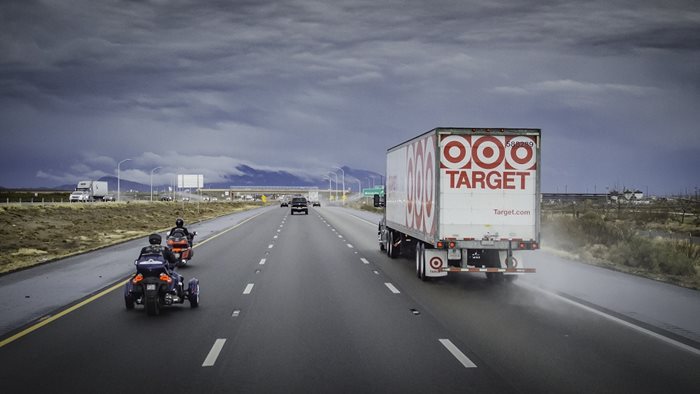
Summer is upon us and so are the bikers. In May, I saw a large group participating in Rolling Thunder, headed across the country to Washington D.C. In August, over half a million bikers are expected to make the trek to Sturgis, SD for their annual rally. But on any nice warm day, you're bound to see motorcycles on the road, so Look Twice and Save a Life!
Surprisingly, a recent study shows that most motorcycle crashes happen when a motorcycle strikes a vehicle from behind. But the scenario we need to look out for are uncontrolled intersections. Bikers are 41 times more likely to crash in an uncontrolled intersection. The motorcycle and its rider are small compared to cars and trucks. Their image can easily be blocked by our large mirrors when we're scanning the road. We must always move our head and look around our mirrors at intersections in case there's a motorcycle or a pedestrian there.
According to the Motorcycle Safety Foundation, these are the top 10 things we should know about motorcycles:
- Over half of all fatal motorcycle crashes involve another vehicle. Most of the time, the car or truck driver, not the motorcyclist, is at fault. There are a lot more cars and trucks than motorcycles on the road, and some drivers don't "recognize" a motorcycle – they ignore it (usually unintentionally).
- Because of its narrow profile, a motorcycle can be easily hidden in a car’s blind spots (door/roof pillars) or masked by objects or backgrounds outside a car (bushes, fences, bridges, etc). Take an extra moment to look for motorcycles, whether you're changing lanes or turning at intersections.
- Because of its small size, a motorcycle may look farther away than it is. It may also be difficult to judge a motorcycle’s speed. When checking traffic to turn at an intersection or into (or out of) a driveway, predict a motorcycle is closer than it looks.
- Motorcyclists often slow by downshifting or merely rolling off the throttle, thus not activating the brake light. Allow more following distance, say 3 or 4 seconds. At intersections, predict a motorcyclist may slow down without visual warning.
- Motorcyclists often adjust position within a lane to be seen more easily and to minimize the effects of road debris, passing vehicles, and wind. Understand that motorcyclists adjust lane position for a purpose, not to be reckless or show off or to allow you to share the lane with them.
- Turn signals on a motorcycle usually are not self-canceling, thus some riders (especially beginners) sometimes forget to turn them off after a turn or lane change. Make sure a motorcycle's signal is for real.
- Maneuverability is one of a motorcycle's better characteristics, especially at slower speeds and with good road conditions, but don't expect a motorcyclist to always be able to dodge out of the way.
- Stopping distance for motorcycles is nearly the same as for cars, but slippery pavement makes stopping quickly difficult. Allow more following distance behind a motorcycle because you can't always stop "on a dime."
- When a motorcycle is in motion, see more than the motorcycle – see the person under the helmet, who could be your friend, neighbor, or relative.
- If a driver crashes into a motorcyclist, bicyclist, or pedestrian and causes serious injury, the driver would likely never forgive himself/herself.
If you're in California, watch out for lane splitters. It's legal for motorcycles to ride on the line between lanes at certain speeds of traffic. Read more about it from my earlier blog.